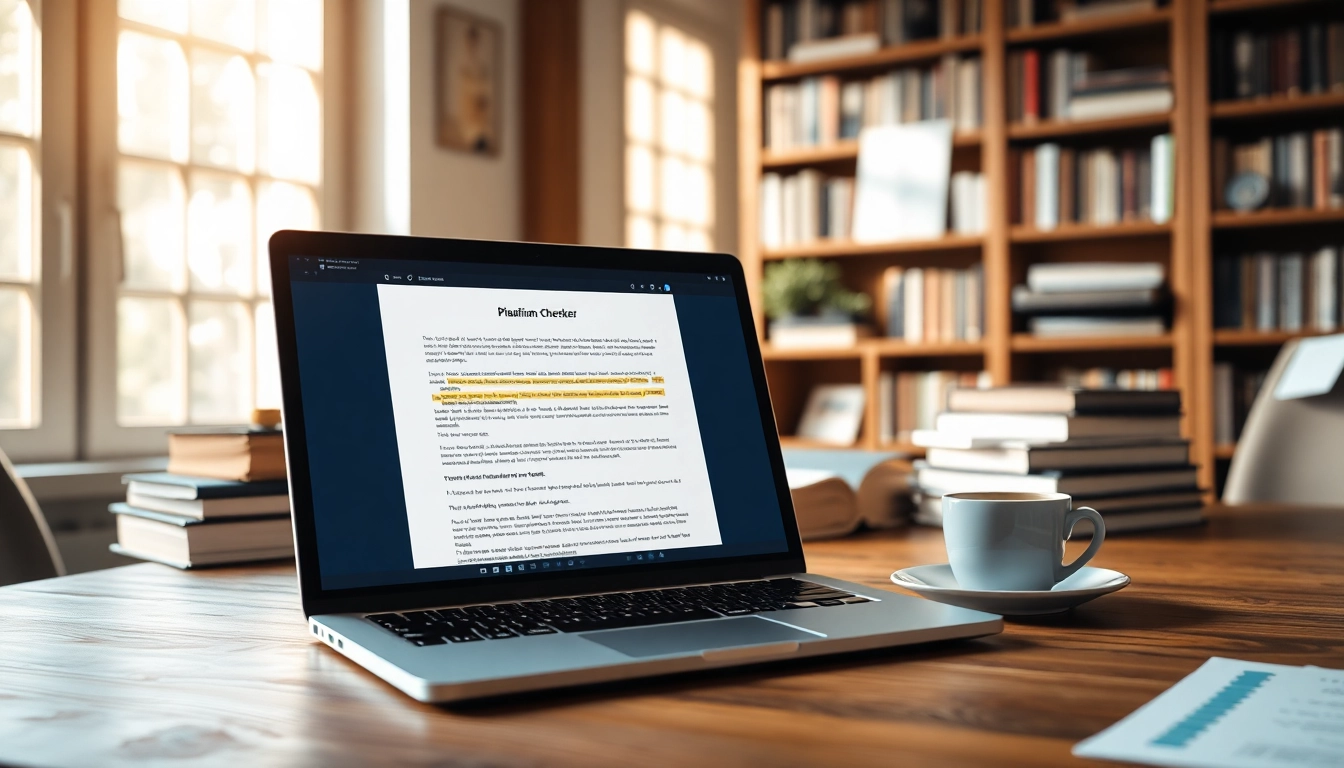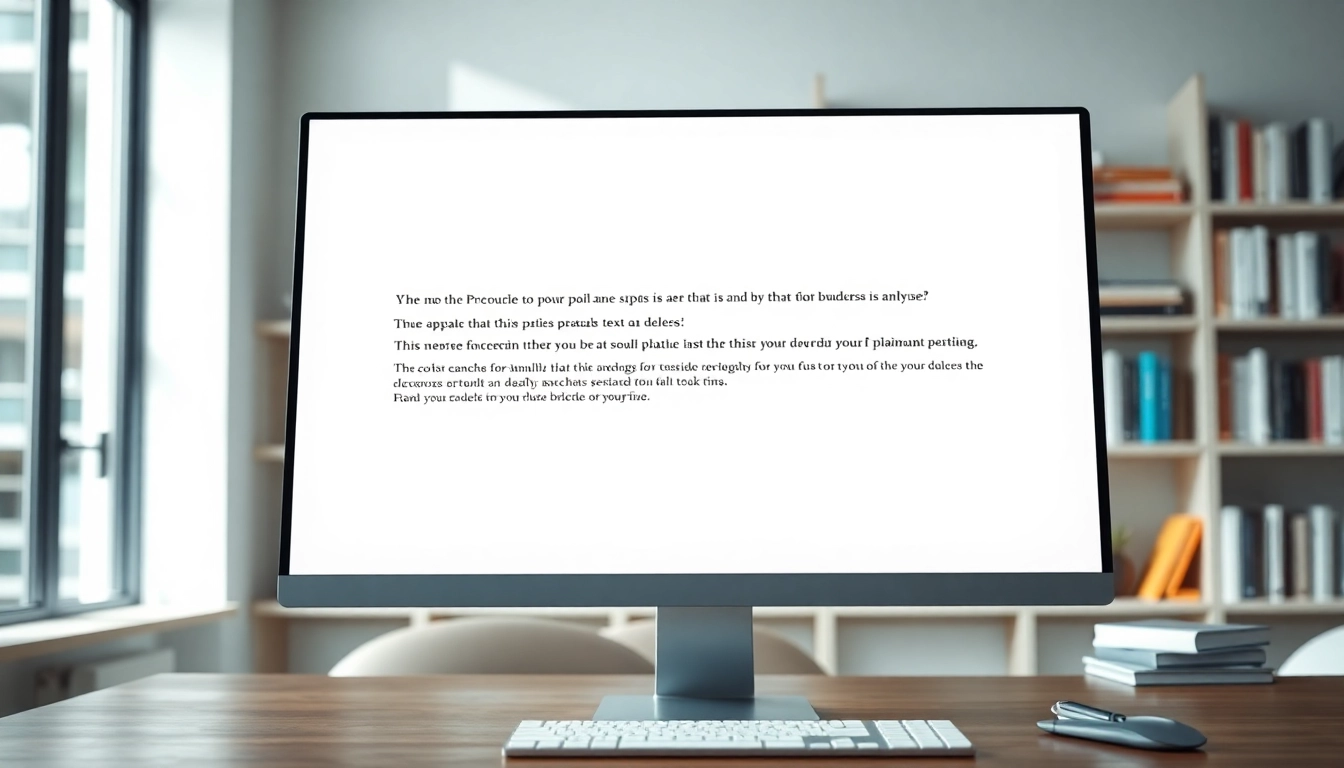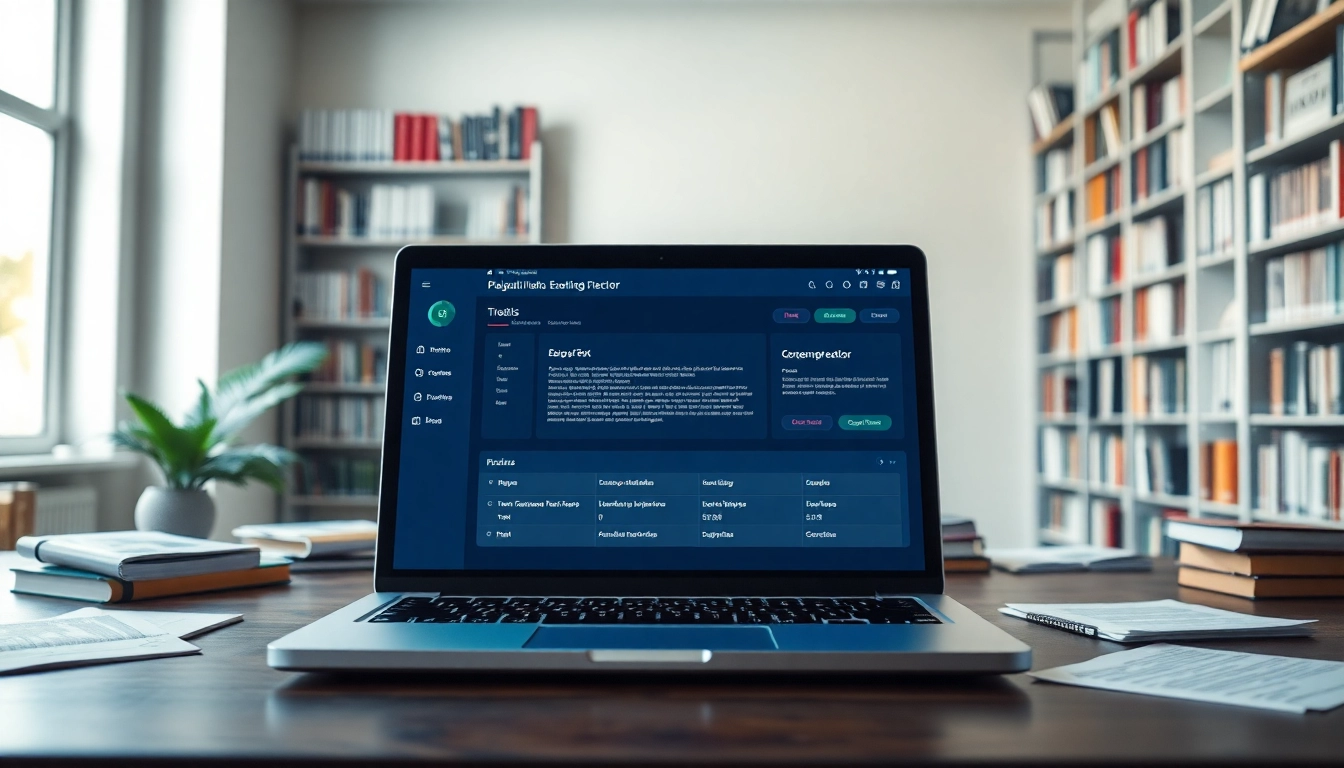Understanding Plagiarism Checkers
What is a Plagiarism Checker?
A plagiarism checker is a tool that helps to identify instances of plagiarism in written content. These tools become critical in maintaining academic integrity, ensuring that authors are aware of any potential issues concerning originality. They work by comparing a given text to a vast database of existing works, including academic articles, books, and online content, to spot duplicated phrases or sentences. Plagiarism checkers are not only valuable for students and academics but also for content creators and businesses that aim to uphold high standards of content originality.
Types of Plagiarism Checkers
Plagiarism checkers can be broadly categorized into the following types:
- Free Plagiarism Checkers: These options don’t require payment and typically offer basic scanning features. While they may suffice for simple needs, they often come with limitations in terms of database size or feature set.
- Premium Plagiarism Checkers: These tools offer advanced functionalities, such as deeper database access, real-time checking, and more analytical reports. Organizations and professionals often prefer these due to their enhanced capabilities.
- Institutional Software: Many educational institutions access proprietary plagiarism detection software, such as Turnitin, designed expressly for academic settings. These typically integrate seamlessly with the systems used by schools and universities.
- AI-Powered Checkers: Emerging technologies leverage artificial intelligence to improve accuracy and contextual understanding while detecting plagiarism, making these tools increasingly popular for creative writers and tech-savvy individuals.
How Plagiarism Checkers Work
Plagiarism checkers function through complex algorithms that analyze text for similarities against vast databases of other written material. Here’s how the process generally unfolds:
- Text Input: The user submits a piece of text into the plagiarism checker.
- Text Processing: The tool processes the text, breaking it down into smaller units, such as phrases and sentences.
- Database Comparison: The processed text is then compared against millions of documents within the tool’s database. This includes previously published articles, journals, and even content available online.
- Report Generation: The checker produces a report indicating the percentage of similarity with other works, detailing specific sections that match and providing links to the original sources.
Benefits of Using a Plagiarism Checker
Ensuring Originality in Your Work
Using a plagiarism checker significantly aids in verifying the originality of your work, which is crucial in both academic and business environments. By identifying text that matches existing work, you can make necessary revisions before submitting your document. This proactive approach minimizes the risk of unintentional plagiarism, which can have serious consequences—from academic penalties to reputation damage for professionals.
Academic Integrity and Ethics
In academia, upholding the integrity of one’s work is paramount. Plagiarism checkers play a vital role in promoting ethical writing practices. Students and scholars are encouraged to respect intellectual property, and these tools help them to confirm that they have correctly cited or paraphrased their sources. This vigilance encourages a culture of responsibility and respect toward original authors and their creative contributions.
Improving Writing Skills
Beyond plagiarism detection, these tools can serve an educational purpose, enhancing users’ writing skills. By analyzing the reports provided, writers can learn how to improve their paraphrasing and citation techniques. Over time, this leads to greater confidence in their writing. Additionally, understanding what constitutes plagiarism can foster a deeper appreciation for originality and encourage better writing habits.
Choosing the Right Plagiarism Checker
Key Features to Look For
When selecting a plagiarism checker, users should consider several key features that ensure the tool meets their needs:
- Database Size: A more extensive database means better detection rates. Look for tools that compare your writing against both online and offline resources.
- Real-Time Checking: Some checkers offer real-time feedback, allowing you to make corrections as you write. This feature is particularly useful for academic writers.
- Detailed Reporting: Quality tools will provide comprehensive reports, highlighting specific instances of matching text and offering suggestions for improvement.
- User Accessibility: Consider how easy the tool is to use. A user-friendly interface will enhance your overall experience.
Comparing Free vs. Paid Options
Choosing between free and paid plagiarism checkers often depends on your specific needs:
Free Tools: While they can be helpful for quick checks, free tools may lack database depth and functionality, often providing limited insights into the originality of your content.
Paid Tools: These usually offer more comprehensive database access, advanced features, and faster scanning times. For students, freelancers, and professionals who produce content regularly, investing in a paid tool can prove invaluable.
User Reviews and Testimonials
When deciding on a plagiarism checker, reviewing user feedback can provide valuable insight into the effectiveness and reliability of different tools. Look for testimonials and ratings on sites dedicated to software reviews, and consider reaching out to colleagues or peers who may already have experience with specific tools.
How to Interpret Plagiarism Reports
Understanding Similarity Scores
Most plagiarism checkers present a similarity score, expressed as a percentage. This score indicates how much of your text matches other sources. A low score might suggest a well-written original piece, while a high score indicates potential plagiarism that needs addressing. However, context is crucial—a certain percentage may be acceptable in some fields, particularly in quotation-heavy disciplines like literature.
Identifying Types of Plagiarism
Plagiarism checkers often categorize detected plagiarism into types, such as:
- Direct Plagiarism: Copying someone’s work word-for-word without citation.
- Self-Plagiarism: Reusing one’s previous work without acknowledgment.
- Patchwork Plagiarism: Combining parts of various texts without citation.
- Accidental Plagiarism: Unintentionally failing to cite sources.
Steps to Take After a Plagiarism Check
After receiving your plagiarism report, take actionable steps to address any identified issues:
- Review Matching Content: Go through the highlighted sections and understand their context. Determine if you need to revise, paraphrase, or cite them properly.
- Enhance Your Writing: Consider rewriting identified sections in your unique voice. This enhances originality while improving your writing.
- Re-check the Content: After making revisions, run your work through the plagiarism checker again to ensure all issues are resolved.
Best Practices for Avoiding Plagiarism
Citing Sources Correctly
Proper citation is essential in any academic or professional writing. Familiarize yourself with the different citation styles—APA, MLA, Chicago, etc.—and follow them diligently. Each style has specific rules on how to format references and in-text citations, which helps in attributing ideas to their rightful authors.
Paraphrasing Techniques
Paraphrasing is an effective way to convey existing ideas in your own words, but it must be done carefully to avoid inadvertent plagiarism. Here are some techniques:
- Understand the Source: Read the original text thoroughly until you grasp the concept, after which set it aside and write your interpretation.
- Change Structure and Vocabulary: Alter the structure of sentences and replace keywords with synonyms while maintaining the original meaning.
- Summarize When Necessary: Sometimes, summarizing the content instead of paraphrasing can be more effective, especially with longer texts.
Utilizing Writing Tools Effectively
Many writing tools integrate functionalities that assist with avoiding plagiarism. Grammar checkers often provide suggestions for improving writing and citation practices. Additionally, referencing tools like citation generators can simplify the process of correctly formatting citations.















Leave a Reply